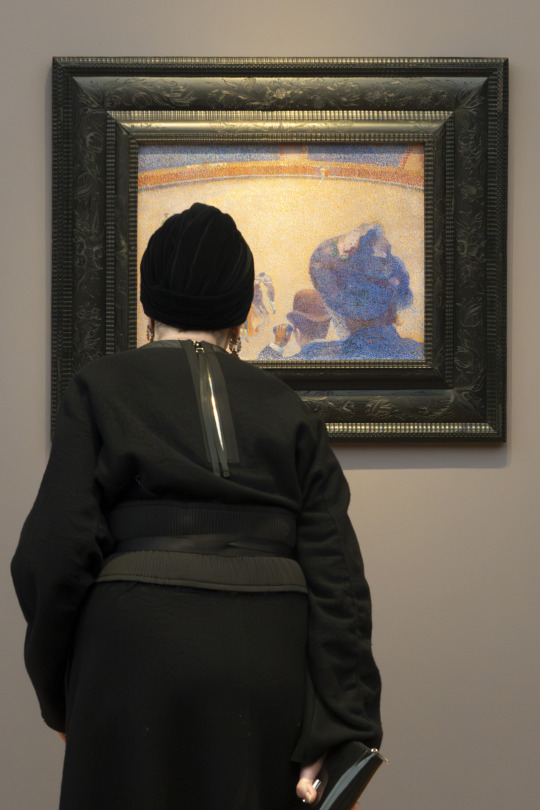#henri edmond cross
Explore tagged Tumblr posts
Text
Writing Notes: Habits

Habit - a well-learned behavior or automatic sequence of behaviors that is relatively situation specific and over time has become motorically reflexive and independent of motivational or cognitive influence—that is, it is performed with little or no conscious intent.
For example, the act of hair twirling may eventually occur without the individual’s conscious awareness.
How Habits are Formed
The question of habit formation can be approached from a scientific perspective or a more subjective and experiential one.
The Subjective Experience of Habit Formation
Bergson was a French philosopher who took cues from Ravaisson’s discussion of habits and their formation. Bergson (1911) wrote of both active and passive habits.
Passive habits arise from exposure to things we eventually get used to. High-altitude climbers gradually adapt their bodies to the lower levels of oxygen available as they climb above 7,000 feet.
Active habits are those we develop by repeated intention and effort, crystalizing as skills we perform with little or no thought. A gymnast practices walking, jumping, and flipping on a narrow beam until she can do all these maneuvers smoothly without falling.
Habits as skills can also be seen as a springboard to creativity.
Based on what we can habitually do, we reach new heights, as when a jazz musician ingrains the playing of a basic melody, then improvises new and adventurous notes on top of the underlying theme.
The scientific perspective on habit formation is exemplified today by neuroscience research. This research has highlighted crucial brain pathways involved in forming habits.
The Neuroscience of Habit Formation
When you first learn to tie your shoes, the attempts are quite conscious and effortful. As you practice this skill, it becomes a habit, something you can do easily and automatically, even while thinking of other things.
Neuroscience has asked how conscious and goal-directed actions are converted into a habit (Yin & Knowlton, 2006).
Clues to the mystery of habit formation can be found in an ancient area of the brain called the basal ganglia (Yin & Knowlton, 2006).
The basal ganglia are deep structures near the base of the brain that developed early in the evolution of our nervous system.
These structures play a major role in coordinating all kinds of voluntary movements, including the complex motions involved in walking, running, eating, talking, and grasping and manipulating with the hands, etc.
The basal ganglia, in conjunction with the brain’s frontal or “executive” lobe, also help perform the crucial task of rapidly selecting which type of movement should be made, out of the many options available in a given situation.
When faced with a tiger suddenly springing from the bushes, what should you do? Stand still, run to climb a tree, or make a dash for the river and hope the tiger can’t swim? The movement program chosen at this point might determine whether you get to pass your genes along to any offspring.
Since movements are most effective when well learned or habitual, the basal ganglia are also very involved in habit formation. Certain habits appear to be formed through the interplay between two distinct basal ganglia pathways (Yin & Knowlton, 2006).
One of these pathways is associative. It consciously collects information needed for reaching goals such as staying warm, finding food, finding a mate, and expressing oneself artistically.
A second pathway is more automatic. This route takes those lessons learned from the first pathway and includes them in a repertoire of stored habits.
These habits are then available to be called upon, when cued by a given situation.
Another key aspect to habit formation is positive reinforcement or reward.
For an activity to become a habit, it helps if it’s not only repeated often, but also positively reinforced.
We can trigger positive reinforcement through an external reward, like money, food, or praise. Such experiences release dopamine, one of the brain’s favorite “feel good” neurochemicals. A rewarding dopamine release can also occur through internal triggers, like visualizing yourself reaching a cherished goal (Neuroscience News, 2015).
Dopamine release has been shown to depend on neurons within the limbic system, another ancient brain circuit that processes emotions and the experience of reward. The limbic system is deeply connected with the basal ganglia and can stamp our memories and habits with emotional and reward value (Trafton, 2012).
Psychological Theories on Habit Formation
The American philosopher William James made early contributions to habit theory that still resonate today.
James (1914) thought of habit as the result of repeating the same action over and over, in similar circumstances, until it is ingrained in our brain circuitry.
He also believed that ingrained habits would automatically arise in the face of strong cues associated with their formation. When walking into your darkened room, the room and darkness cue the automatic habit of reaching for the light switch.
Behaviorists such as B. F. Skinner would expand on James’s insights into habit, with animal studies that emphasized how habit formation is fueled by rewards.
Skinner (1953) created cages for pigeons with buttons that dropped a food pellet when pushed.
In exploring the cage, the hungry pigeons would eventually peck the button on the wall. They soon came to realize that pecking the button would produce a food pellet.
This experimental scenario included what for Skinner were the primary factors in producing a habit:
Stimulus, like the button to be pecked
Behavior, like pecking the button
Reward, like the food pellet
Skinner (1953) believed that behaviors repeatedly engaged in for the sake of a reward will become habits. This hypothesis was borne out by his pigeons repeatedly pressing the button, even when that action was no longer followed by a food pellet.
Other theories sought to go beyond behaviorism’s focus on observed behavior alone, to include a mental or cognitive component in habit.
Edward Tolman (1948, 1954) believed that repeated or habitual responses involved the use of internal ideas, or “maps,” as cognitive components that helped navigate mazes, etc.
Neuroscience has further explored certain questions about habit, with the help of nerve conduction and brain scan studies.
Sources: 1 2 ⚜ More: References ⚜ On Habits ⚜ Writing Resources PDFs
#habits#writing reference#character development#writeblr#psychology#literature#dark academia#writers on tumblr#spilled ink#writing prompt#creative writing#light academia#studyblr#writing inspiration#lit#character building#henri edmond cross#writing resources
121 notes
·
View notes
Text

Henri Edmond Cross (French,1856-1910)
Landscape with Stars, c. 1905-1908
Watercolor over graphite on white wove paper
195 notes
·
View notes
Text

'the pink cloud,' henri-edmond cross, oil on canvas, 1896.
105 notes
·
View notes
Text

Title: The Pink Cloud
Artist: Henri-Edmond Cross
Date: 1896
Style: Pointillism
Genre: Cloudscape
#art history#art#painting#artwork#museums#history#culture#vintage#curators#pointillism#cloudscape#henri edmond cross#classicalcanvas
218 notes
·
View notes
Text

#peoplematchingartworks#henri edmond cross#Kupferstichkabinett#stefandraschan#photography#contemporaryart#berlin
14 notes
·
View notes
Text

Landscape with Stars (1905 - 1908) - Henri-Edmond Cross
#henri edmond cross#artedit#art history#painting#artwork#20th century#xx century#post impressionism#neo impressionism#landscape#stars#art#mine
25 notes
·
View notes
Text
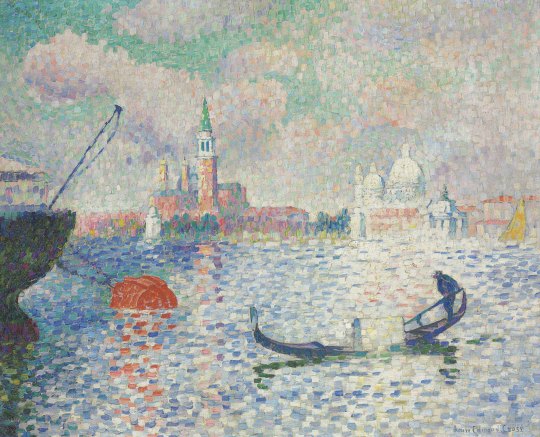
Vue du bassin de Saint-Marc (View of St. Mark's Basin), Henri Edmond Cross, circa 1905
Oil on canvas 23 ½ x 28 ¾ in. (59.8 x 73 cm)
#art#painting#henri edmond cross#impressionism#neo impressionism#20th century art#20th century#venice#italy#1900s#cityscape#french#oil
52 notes
·
View notes
Text

Henri-Edmond Cross
Landscape with Stars
ca. 1905-1908
#henri edmond cross#french artist#french art#french painter#french painting#neo impressionism#landscape#landscape painting#landscape art#landscape aesthetic#art on tumblr#modern art#art history#aesthetictumblr#tumblraesthetic#tumblrpic#tumblrpictures#tumblr art#aesthetic#beauty
39 notes
·
View notes
Photo

Landschaft, um 1904 von Henri Edmond Cross (Aquarell und Buntstift)
#kunst#kunstwerk#art#artwork#henri edmond cross#künstler#artist#landschaft#landscape#natur#nature#draußen#outdoors#pflanzen#plants#wiese#meadow#gras#grass#grün#green#baum#tree#blätter#leaves#park#garten#garden#pointilism#pointilismus
15 notes
·
View notes
Text

Henri-Edmond Cross
8 notes
·
View notes
Photo

Henri Edmond Cross, Landscape with Stars, 1905-08
8 notes
·
View notes
Photo
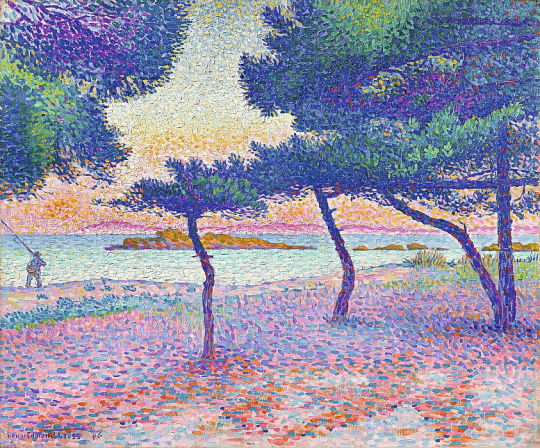
The beach at Saint-Clair, 1896. by Henri Edmond Cross
#Henri Edmond Cross#beach#saint-clair#saint clair#edmond cross#france#provence#nature#colorful#bunt#pointillism#seaside#sea#post impressionist art#post impressionism#art#artwork#french#french art#artist#art print#best seller
15 notes
·
View notes
Text

Henri Edmond Cross (French,1856-1910)
Female Plaque, circa 1893-1906
Glazed stoneware
93 notes
·
View notes
Text
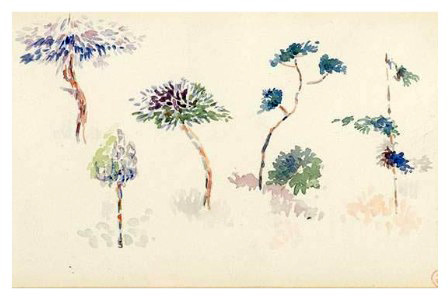
Henri Edmond Cross
- Estudio de pinos, Costa de Provenza; acuarela.
22 notes
·
View notes
Text
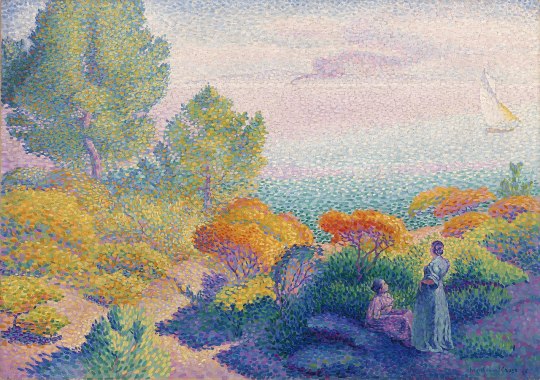
Title: Two Women by the Shore, Mediterranean
Artist: Henri-Edmond Cross
Date: 1896
Style: Pointillism
Genre: Landscape
#art history#art#painting#artwork#museums#history#culture#vintage#pointillism#landscape#henri edmond cross#curators#classicalcanvas
172 notes
·
View notes
